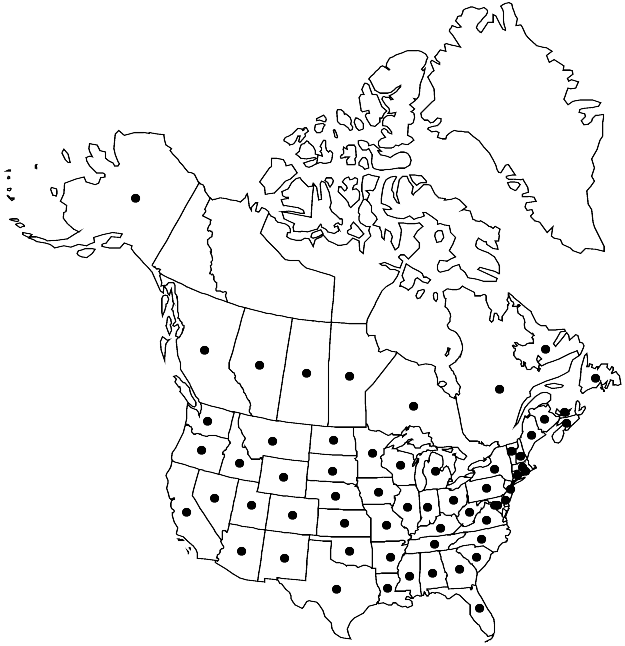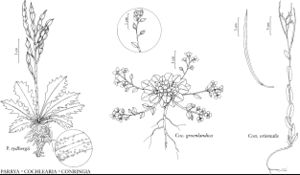Conringia orientalis
Fl. Belg., 123. 1827.
Plants sometimes winter annuals. Stems mostly simple, (1–)3–7 dm. Basal leaves: blade (slightly fleshy), pale green, oblanceolate to obovate, 5–9 cm, margins ± entire. Cauline leaves: blade oblong to elliptic or lanceolate, (1–)3–10(–15) cm × (5–)20–25(–50) mm, base deeply cordate-amplexicaul, apex rounded. Fruiting pedicels ascending, straight or curved-ascending, (8–)10–15(–20) mm. Flowers: sepals 6–8 × 1–1.5 mm, median pair narrower than lateral, apex acute; petals 7–12 × 2–3 mm, base attenuate, claw usually as long as sepal; filaments 5–7 mm; anthers 1.5–2 mm. Fruits ± torulose, strongly 4-angled to ± cylindrical, 1-nerved, keeled, (5–)8–14 cm × 2–2.5 mm; style cylindrical, 0.5–4 mm. Seeds brown, 2–2.9 × 1.2–1.5 mm.2n = 14.
Phenology: Flowering (Mar in Texas) May–Aug.
Habitat: Cultivated lands, grain fields, disturbed areas, waste places, roadsides, gardens
Elevation: 0-3500 m
Distribution

Introduced; Alta., B.C., Man., N.B., Nfld. and Labr., N.S., Ont., P.E.I., Que., Sask., Ala., Alaska, Ariz., Ark., Calif., Colo., Conn., Del., D.C., Fla., Ga., Idaho, Ill., Ind., Iowa, Kans., Ky., La., Maine, Md., Mass., Mich., Minn., Miss., Mo., Mont., Nebr., Nev., N.H., N.J., N.Mex., N.Y., N.C., N.Dak., Ohio, Okla., Oreg., Pa., R.I., S.C., S.Dak., Tenn., Tex., Utah, Vt., Va., Wash., W.Va., Wis., Wyo., Europe, Asia, introduced also in Mexico, nw Africa, Australia.
Discussion
Conringia orientalis was collected on ballast in New York as early as 1879. It is most abundant in the plains and prairies of both the United States and Canada (I. A. Al-Shehbaz 1985; R. C. Rollins and Al-Shehbaz 1986). In disturbed places, it has penetrated into the native vegetation over a wide area.
Selected References
None.
